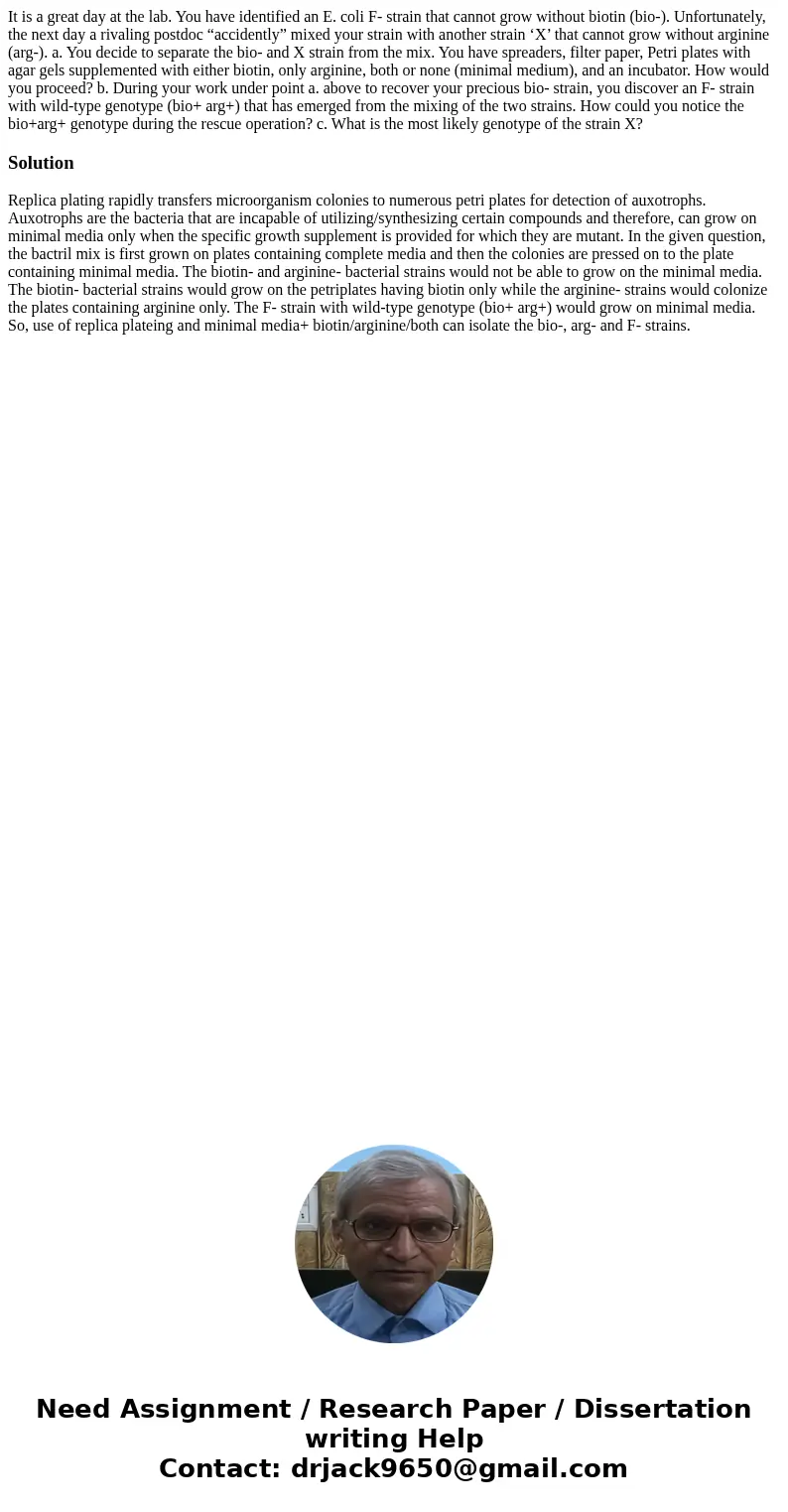It is a great day at the lab You have identified an E coli F
It is a great day at the lab. You have identified an E. coli F- strain that cannot grow without biotin (bio-). Unfortunately, the next day a rivaling postdoc “accidently” mixed your strain with another strain ‘X’ that cannot grow without arginine (arg-). a. You decide to separate the bio- and X strain from the mix. You have spreaders, filter paper, Petri plates with agar gels supplemented with either biotin, only arginine, both or none (minimal medium), and an incubator. How would you proceed? b. During your work under point a. above to recover your precious bio- strain, you discover an F- strain with wild-type genotype (bio+ arg+) that has emerged from the mixing of the two strains. How could you notice the bio+arg+ genotype during the rescue operation? c. What is the most likely genotype of the strain X?
Solution
Replica plating rapidly transfers microorganism colonies to numerous petri plates for detection of auxotrophs. Auxotrophs are the bacteria that are incapable of utilizing/synthesizing certain compounds and therefore, can grow on minimal media only when the specific growth supplement is provided for which they are mutant. In the given question, the bactril mix is first grown on plates containing complete media and then the colonies are pressed on to the plate containing minimal media. The biotin- and arginine- bacterial strains would not be able to grow on the minimal media. The biotin- bacterial strains would grow on the petriplates having biotin only while the arginine- strains would colonize the plates containing arginine only. The F- strain with wild-type genotype (bio+ arg+) would grow on minimal media. So, use of replica plateing and minimal media+ biotin/arginine/both can isolate the bio-, arg- and F- strains.

 Homework Sourse
Homework Sourse